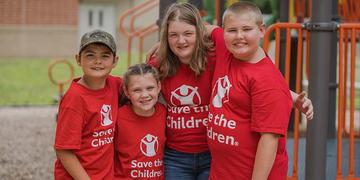Our Work for Children in the U.S.
Across rural America, where one in 5 children live in poverty, families face significant challenges accessing vital resources and essential services like child care, quality education and economic opportunity. That's why Save the Children partners with rural communities, and has for over 90 years, to help children thrive—from early learning and Head Start to disaster recovery.
Your donation to Save the Children can help deliver critical aid to the most vulnerable kids in rural America.
Learn More About Our Programs in the U.S.
Advocate for Children in the U.S.
Right now, $7 billion in previously approved federal education funding is currently on hold. This delay could force summer and afterschool programs, as well as other safe learning environments, to shut down. Education programs are running out of time.
Join Save the Children's political advocacy arm, Save the Children Action Network (SCAN), and Tell Congress: Demand the Department of Education release these funds NOW.
Save the Children's Rural Child Well-Being Dashboard: Understanding Childhood in Rural America
Explore the lives of rural America’s children and families with Save the Children’s Rural Child Wellbeing Dashboard. See how well-being in your state compares to the nation, or investigate specific indicators like poverty, food security, vehicle access and opportunity.

- Rural families are nearly 20% more likely to receive public assistance than non-rural families.
- Rural households are more vulnerable to natural disasters.
- Over 1 in 20 households in rural America don’t have a private vehicle, making it difficult to access childcare and other essential services.
Updated: July 9, 2025



